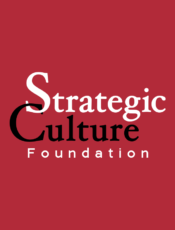Kabir SHEIKH
Forty years ago last month, thousands of delegates from 134 countries gathered in Kazakhstan, then part of the Soviet Union, to adopt the Declaration of Alma-Ata. This landmark agreement committed the world to expanding health access, and the principles it enshrined in a mere three pages continue to have a profound effect on the field of public health.
The declaration’s continuing appeal consists in its dual character: it is part gospel of applied science, part political manifesto. Among its key messages are increasing community leadership in health planning; reducing elitism in modern medicine; and tackling social inequality for better health outcomes.
One of the biggest differences between 1978 and today is the breadth of health vulnerabilities. Climate change and shifting diets have created new risk categories, while wealth inequalities and political exclusion have produced deeper pockets of vulnerability. Consider, for example, the issue of migration: the politicization of this age-old phenomenon has serious public-health consequences.
Health markets have also changed dramatically. Today, poorly regulated private health-care sectors predominate in many countries in Asia, Latin America and Africa. While the expansion of health-care markets expands patient choice, personal debt is also increasing. Moreover, commercial interests within the food, alcohol and tobacco industries undermine people’s health and complicate efforts to curb the rise in non-communicable illnesses such as heart disease and diabetes.
Regrettably, community involvement in health planning has remained virtually unchanged since 1978. Although research shows that services improve when people participate in health planning, “participatory governance” is not a common feature in many developing countries. With few exceptions – Brazil and Thailand are often singled out – community-centered health systems remain rare.
The Declaration of Alma-Ata’s lasting legacy is the consensus that health can be improved only with a combination of good science, sound economics, and action against social injustices. This was true in the 1970s, and it is true today. The international community should mark the declaration’s anniversary by recommitting to the values it upholds.
Three of Alma-Ata’s messages merit special attention. First, to improve health, leaders need to do more than build clinics and train physicians; they must also protect the environment, ensure access to clean water and sanitation, promote gender equality, create jobs, and strengthen infrastructure. Although these objectives are incorporated in the United Nations Sustainable Development Goals (SDGs), there needs to be more serious commitment to the holistic approach advocated by the Declaration of Alma-Ata.
Second, more needs to be done to promote interdisciplinary health sciences that address both the practical and ethical questions posed by Alma-Ata. One opportunity to reaffirm this principle will come this month, when some 2,000 stakeholders from around the world gather in Liverpool, England, for the Fifth Global Symposium on Health Systems Research. Engaging government policymakers, civil society, the media, and funders on the message of Health for All will be crucial to strengthening health systems.
Finally, just as the declaration prescribed, international health organizations and donors are beginning to reorient their strategies to empower leaders at the local and national levels. While there is still room for improvement, more women and citizens of developing countries occupy prominent positions in global organizations than before.
The world has yet to achieve the ideals announced in 1978. But we are moving in the right direction. True change takes place close to common people, and not just in centers of global power. It can come through more representative public institutions, more relevant science, or more social action. In all of these areas, the Declaration of Alma-Ata will no doubt be a source of continued inspiration.








